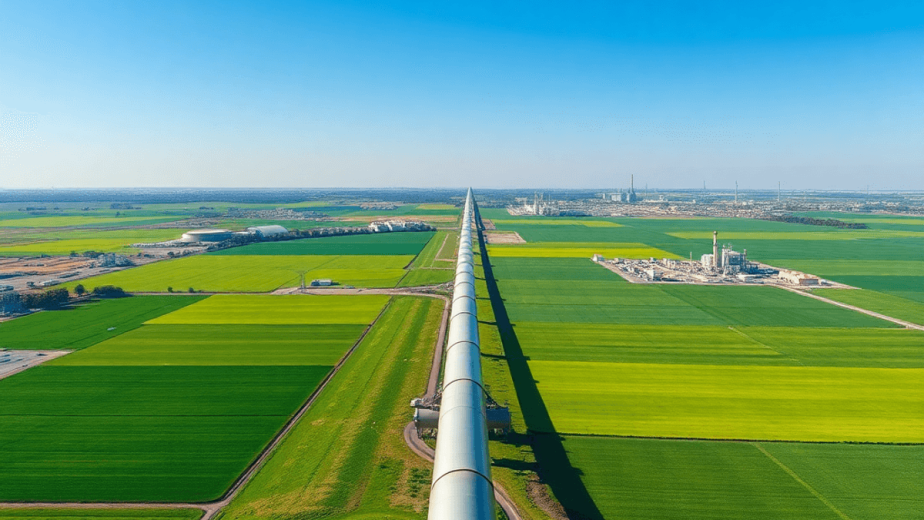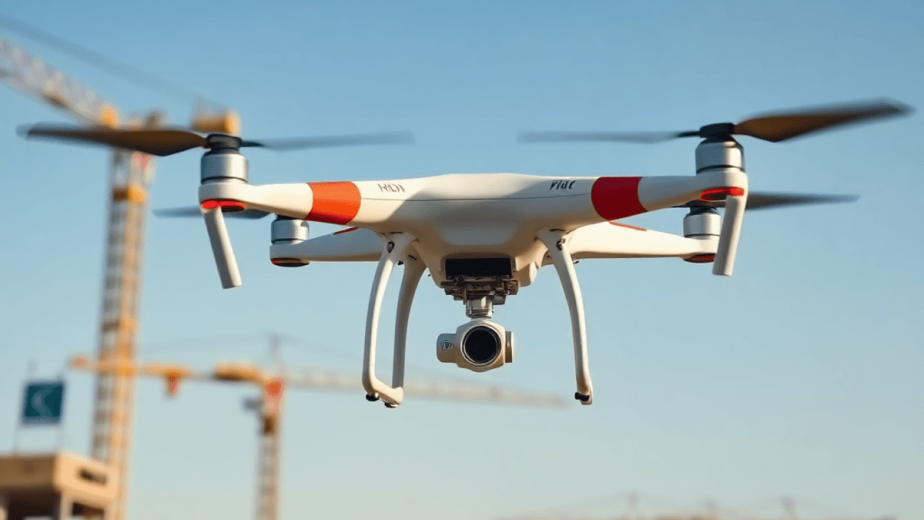Introduction
Thermal imaging plays a critical role in the electrical utility sector, significantly enhancing grid reliability by identifying heat anomalies in electrical infrastructure. This advanced technology allows utilities to conduct proactive maintenance, reducing the risk of unexpected outages and ensuring consistent service delivery.
Mira Spatial stands as a trusted partner for organizations looking to leverage innovative technologies that improve infrastructure management. By integrating thermal imaging with other cutting-edge solutions, Mira Spatial empowers utilities to maintain operational efficiency and maximize asset performance.
Embracing thermal imaging technology is essential for modern utilities aiming to enhance their grid reliability and overall performance.
Understanding Thermal Imaging Technology
Thermal imaging technology is crucial for electrical utilities as it helps identify heat anomalies in components, preventing potential failures. It works by converting infrared radiation emitted from objects into visual images, allowing us to see temperature differences that indicate underlying problems.
Types of Thermal Sensors
There are several types of thermal sensors used in inspections, each with its own advantages:
- Uncooled Focal Plane Arrays (FPA): These are ideal for general inspections because they are small and cost-effective. They perform reliably in various situations.
- Cooled Focal Plane Arrays: These sensors are more sensitive than uncooled ones and are excellent at detecting smaller temperature differences. They are suitable for critical applications where accuracy is crucial.
- Infrared Thermometers: These handheld devices are useful for quick assessments as they measure surface temperatures but do not provide the comprehensive imaging capability of thermal cameras.
Advantages of Drone Inspections
Using drones equipped with thermal imaging technology has significant advantages:
- Increased Accessibility: Drones can easily reach difficult areas such as transmission lines or remote substations, reducing safety risks associated with manual inspections.
- Faster Data Collection: Drones can cover large areas quickly, speeding up the data collection process and enabling utilities to respond promptly to identified issues.
By using thermal imaging technology, electrical utilities can proactively monitor and maintain the grid, ensuring its reliability.
Enhancing Grid Reliability with Thermal Imaging
Thermal imaging plays a crucial role in identifying potential issues within electrical grids before they escalate into significant failures. By detecting heat anomalies, utilities can implement proactive maintenance strategies that enhance operational efficiency and minimize downtime.
Benefits of Thermal Imaging in Preventative Maintenance:
- Early Detection: Thermal cameras capture temperature variations, allowing utilities to pinpoint abnormal heating in equipment such as transformers, circuit breakers, and cables.
- Risk Mitigation: Addressing these anomalies early prevents equipment failure, reducing the risk of outages and ensuring a stable power supply.
Case Studies Demonstrating Effectiveness:
- Utility X: Implemented thermal imaging inspections across their transmission lines. Early detection of overheating connections resulted in timely interventions, ultimately preventing a major blackout during peak demand.
- Utility Y: Utilized thermal imaging technology to monitor substations. The identification of faulty components led to immediate repairs, avoiding potential service disruptions and enhancing overall reliability.
The effectiveness of thermal imaging extends beyond simple detection; it empowers utilities to make informed decisions based on real-time data. This capability ensures that maintenance efforts are targeted and efficient, aligning with the industry’s shift toward preventative maintenance practices.
By integrating thermal imaging into routine inspections, utilities can not only enhance grid reliability but also support a culture of proactive management that prioritizes uninterrupted service delivery.
Integration with Advanced Technologies for Comprehensive Assessments
The combination of thermal imaging and AI-driven analysis significantly improves the effectiveness of inspections in the electrical utility sector. This integration not only automates data collection but also improves accuracy, leading to more precise asset assessments.
Benefits of AI in Thermal Imaging
- Automated Data Analysis: AI algorithms can quickly process extensive thermal data, identifying patterns and discrepancies that may indicate potential failures. This capability allows for timely interventions and reduces the reliance on manual inspection processes.
- Enhanced Accuracy: Machine learning models can be trained to recognize specific heat signatures associated with various issues within electrical components. Such advanced recognition helps in minimizing false positives, ensuring that utilities focus resources on genuine concerns.
Holistic Asset Understanding
Combining panoramic imagery with thermal data creates a comprehensive view of asset conditions. This integration offers several advantages:
- Improved Contextual Information: Panoramic images provide a visual reference for thermal anomalies, allowing engineers to understand the physical context of the potential issues identified through thermal imaging.
- Facilitated Decision-Making: A complete visual and thermal assessment equips utility managers with actionable intelligence, enabling informed decisions regarding maintenance priorities and resource allocation.
This approach not only supports proactive maintenance strategies but also strengthens grid reliability by ensuring that assets are monitored comprehensively and effectively. As technology continues to evolve, the role of thermal imaging in enhancing grid reliability will expand, driven by advancements in AI and data analytics.
Mira Spatial’s Comprehensive Solutions for Utilities
Mira Spatial offers a suite of advanced services tailored to enhance thermal imaging and infrastructure management within the utility sector. Their extensive expertise positions them as a leader in this field, ensuring utilities can operate at peak efficiency. Key offerings include:
1. Infrastructure Monitoring & Analytics
This service provides real-time asset tracking, predictive maintenance, and comprehensive risk assessments. Leveraging cutting-edge technology, utilities can maintain their infrastructure with greater precision and foresight.
2. Asset Intelligence Platform
This platform utilizes AI-driven anomaly detection and interactive dashboards, enabling utilities to visualize data effectively. The integration of these tools allows for informed decision-making based on actionable insights.
Mira Spatial’s end-to-end solutions are designed specifically to support utilities in leveraging innovative technologies for improved performance:
1. Mira Capture
Focused on reality capture services, this solution uses drones and satellite data acquisition to deliver high-precision mapping and monitoring capabilities. It transforms raw data into meaningful insights that can drive operational improvements.
2. Mira Monitoring
An automated infrastructure monitoring tool that continuously evaluates asset conditions, ensuring utilities remain proactive in their maintenance strategies. This solution enhances reliability by identifying potential issues before they escalate.
The combination of these advanced technologies empowers utilities to streamline operations while maintaining grid reliability. With Mira Spatial’s commitment to innovation and expertise, the pathway to enhanced infrastructure management becomes clear. For more information about their offerings or to get in touch, you can visit their news page or contact us directly.
Challenges and Future Outlook for Thermal Imaging in Grid Reliability Enhancement
The integration of thermal imaging technology into utilities presents several challenges that must be addressed to maximize its benefits:
1. Adoption Barriers
Many utilities encounter resistance due to existing operational frameworks. Training personnel on new technologies is essential to ensure effective implementation.
2. Cost Considerations
Initial investments in thermal imaging equipment and software can be considerable. However, the long-term savings achieved through preventive maintenance justify this expense.
3. Data Management
The volume of data generated by thermal imaging can overwhelm traditional systems. Implementing AI-driven analytics helps streamline data processing and enhance decision-making.
Looking towards the future, several trends are poised to influence grid reliability:
- Evolving Technologies: Advances in drone capabilities and sensor technologies are enhancing the accessibility and accuracy of thermal inspections.
- AI Integration: The fusion of artificial intelligence with thermal imaging will enable real-time analysis, improving anomaly detection and predictive maintenance strategies.
- Sustainability Focus: As utilities increasingly prioritize sustainability, thermal imaging can assist in monitoring renewable energy sources, ensuring their efficiency and reliability.
Thermal imaging remains a vital tool as utilities navigate these challenges and embrace future opportunities for enhanced grid performance.
Conclusion
Embracing innovative approaches such as thermal imaging plays a crucial role in ensuring a reliable electricity supply, contributing to sustainable energy solutions. The integration of this advanced technology not only helps in identifying potential faults but also improves operational efficiency across the grid.
Key considerations include:
- Staying informed about emerging technologies that can strengthen grid resilience.
- Recognizing the significant benefits of thermal imaging in proactive maintenance and risk management.
Utilities are encouraged to explore advanced solutions like those offered by Mira Spatial. Leveraging their expertise and comprehensive services can transform infrastructure management, ultimately leading to improved reliability in electricity delivery. Investing in these technologies is essential for a sustainable future and resilient energy systems.



